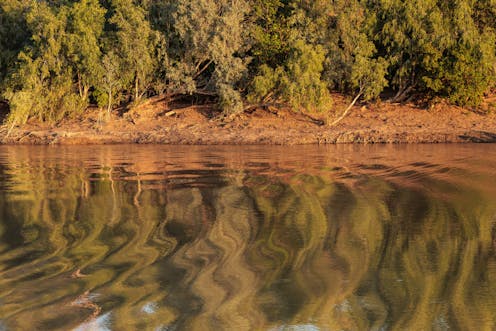Everywhen explores Indigenous deep history, challenging linear, colonial narratives
- Written by Anna Clark, Professor in Public History, University of Technology Sydney

When the eminent Australian anthropologist W. E. H. Stanner[1] first published his essay on “The Dreaming” in 1956, there was increasing scholarly and popular interest in the complexity and duration of Australia’s Indigenous cultures.
Everywhen: Australia and the language of Deep History – edited by Ann McGrath, Laura Rademaker and Jakelin Troy (UNSW Press)
That same year, an excavation by the archaeologist D. J. Mulvaney at Fromm’s Landing[2] in South Australia utilised radiocarbon dating for the first time in Australia. It verified human occupation of that site stretching back 5,000 years.
This might feel slim by today’s understanding of Indigenous ancientness, but in the 1950s and 1960s, scientific dating confirmed Australia’s human history reached well beyond any sort of written archival record. Moving Australian History into the deep past, thousands of years before colonisation brought with it Western forms of history-making, established a radical new timescale for the discipline.
Jim Bowler’s famous work at Lake Mungo[3] in south-western New South Wales in the 1960s and 1970s pushed back the date of Aboriginal occupation even further – to an extraordinary 40,000 years. By the early 21st century, Aboriginal claims that they had always been here didn’t seem unreasonable alongside archaeological finds that measured their presence at 65,000 BCE[4].
Read more: 65,000-year-old plant remains show the earliest Australians spent plenty of time cooking[5]
As well as comprehending that colossal timescale, there has been the challenge of how to acknowledge and translate the understandings and experiences of time held by Australia’s First Peoples. Since Baldwin Spencer and James Gillen’s[6] ethnological work in the late 19th century, the term “Dreamtime[7]”, or “Dreaming” had been variously applied to this variegated Indigenous time: at once now and then, both cosmological and narrative-truth.
In Stanner’s 1956 essay, “The Dreaming[8]”, he attempted to tease out a translation of Indigenous temporality. “The Dreaming conjures up the notion of a sacred, heroic time of the indefinitely remote past, such a time is also, in a sense, still part of the present”, he suggested. “One cannot ‘fix’ The Dreaming in time: it was, and is, everywhen.”
Everywhen.
It was a bold, memorable term. Stanner’s attempt to bring Indigenous knowledges into an Australian public discourse reflected his belief in the importance of understanding Aboriginal history and history-making.

















